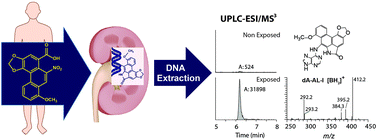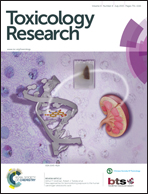New approaches for biomonitoring exposure to the human carcinogen aristolochic acid
Abstract
Aristolochic acids (AA) are found in all Aristolochia herbaceous plants, many of which have been used worldwide for medicinal purposes for centuries. AA are causal agents of the chronic kidney disease entity termed aristolochic acid nephropathy (AAN), and potent upper urinary tract carcinogens in humans. AAN and upper urinary tract cancers are endemic in rural areas of Croatia and other Balkan countries where exposure to AA occurs through the ingestion of home-baked bread contaminated with Aristolochia seeds. In Asia, exposure to AA occurs through usage of traditional Chinese medicinal herbs containing Aristolochia. Despite warnings from regulatory agencies, traditional Chinese herbs containing AA continue to be used world-wide. In this review, we highlight novel approaches to quantify exposure to AA, by analysis of aristolactam (AL) DNA adducts, employing ultraperformance liquid chromatography–electrospray ionization/multistage mass spectrometry (UPLC-ESI/MSn). DNA adducts are a measure of internal exposure to AA and serve as an important end point for cross-species extrapolation of toxicity data and human risk assessment. The level of sensitivity of UPLC-ESI/MS3 surpasses the limits of detection of AL-DNA adducts obtained by 32P-postlabeling techniques, the most widely employed methods for detecting putative DNA adducts in humans. AL-DNA adducts can be measured by UPLC-ESI/MS3, not only in fresh frozen renal tissue, but also in formalin-fixed, paraffin-embedded (FFPE) samples, an underutilized biospecimen for assessing chemical exposures, and in exfoliated urinary cells, a non-invasive approach. The frequent detection of AL DNA adducts in renal tissues, combined with the characteristic mutational spectrum induced by AA in TP53 and other genes provides compelling data for a role of AA in upper urothelial tract cancer.


 Please wait while we load your content...
Please wait while we load your content...